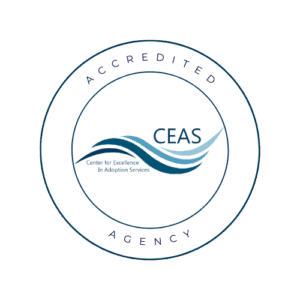Citizenship laws can be confusing for adopted people and adoptive parents. Here is information from the U.S. Citizenship and Immigration Services (USCIS) website to help you navigate obtaining citizenship for an internationally adopted person. All information represented below is from USCIS not Spence-Chapin. Learn more on their website: https://www.uscis.gov/adoption/bringing-your-internationally-adopted-child-united-states/us-citizenship-adopted-child
Documents That Generally Serve as Evidence of U.S. Citizenship for an Adopted Child
| U.S. Passport* | Issued by U.S. Department of State (DOS) | Visit travel.state.gov for more information, including full instructions, current fees and application. |
| U.S. Certificate of Citizenship | Issued by U.S. Citizenship and Immigration Services (USCIS) | Visit uscis.gov for more information including full instructions, current fees, and application. |
*All passport applicants must prove their U.S. citizenship and identity to receive a U.S. passport. A Certificate of Citizenship is generally sufficient to apply for and obtain a U.S. passport for an adopted child. If the adopted child has not received a Certificate of Citizenship, you must submit other proof of acquisition of citizenship, including a certified copy of the final adoption decree (and translation if not in English) and evidence the child met all the conditions in section 320 of the Immigration and Nationality Act (INA) while under the age of 18.
Note: Some federal agencies may check immigration systems to verify citizenship status. USCIS systems will not be updated with a child’s citizenship status unless the family obtains a Certificate of Citizenship.
Lawful Permanent Residence or Citizenship Upon Admission into the U.S.
Under section 320 of the INA, an adopted child will automatically acquire citizenship upon admission to the United States if he or she satisfies these conditions before turning 18:
- Qualifies as an “immediate relative” under INA 101(b)(1)(E), (F), or (G),
- Is admitted as a permanent resident, and
- Is residing in the United States in the U.S. citizen parent(s)’ legal and physical custody.
INA section 320 became effective on February 27, 2001, when the Child Citizenship Act of 2000 (CCA) was signed into law. The child must have been under the age of 18 on the effective date in order to have benefited from the CCA.
Note: If a child does not acquire citizenship from the original prospective or adoptive parents, the child may still be eligible to acquire citizenship if later adopted by different U.S. citizen parent(s), provided they meet all the requirements in section 320 of the INA.
If the child is not eligible for automatic citizenship upon admission to the United States, they will become a lawful permanent resident (LPR) and may become a U.S. citizen once all the conditions of INA 320 are met. If the requirements are not met, the child will still be an LPR and may apply for naturalization under INA 316 once eligible to do so. The chart below outlines the visa classifications, process to obtain evidence of an adopted child’s U.S. citizenship, and the documents that generally serve as evidence of U.S. citizenship for an adopted child.
Obtaining a Certificate of Citizenship
If the adopted child does not qualify for a Certificate of Citizenship upon admission, you may still apply for one if your child satisfies the eligibility requirements. You must follow different processes to apply for a Certificate of Citizenship, depending on whether the adopted child will reside inside or outside of the United States with the U.S. citizen parent.
- General Eligibility: (Please refer to the chart below for more specific guidance.)
- The adopted child meets the definition of child under INA Section 101(b)(1)(E), (F) or (G);
- The child is under 18 years of age when all conditions are met; and
- The child must have at least one U.S. citizen parent (by birth or naturalization).
| Child Will Reside Inside the U.S.
(Pursuing U.S. Citizenship under INA Section 320) |
Child Will Reside Outside the U.S.
(Pursuing U.S. Citizenship under INA Section 322) |
| How to Obtain a Certificate of Citizenship
File Form N-600, Application for Certificate of Citizenship. Additional Requirements:
Note: Please refer to the Form N-600 filing instructions for information about required evidence, fees and where to file. If the adopted child received an IH-3 or IR-3 visa and met all of the INA 320 requirements upon admission to the U.S., the child will receive a Certificate of Citizenship automatically and it is not necessary to file Form N-600. |
How to Obtain a Certificate of Citizenship
File Form N-600K, Application for Citizenship and Issuance of Certificate Under Section 322. Additional Requirements:
Note: On the Form N-600K, petitioners may request a specific USCIS office or preferred city and state for interview, as well as a preferred interview date that is at least 90 days after filing the Form N-600K. After USCIS receives and processes the form, USCIS will send an appointment notice to the family to appear for an interview at a domestic USCIS field office on a particular date. The family may apply for a B-2 visa or other available nonimmigrant visa for the child to travel to the U.S. and must pay the required fee. A nonimmigrant visa is not needed if the child obtains an immigrant visa, and is admitted as an LPR, but will not be residing in the United States. The family may apply for the visa at the same post that processed their adoption case or apply at another post if they currently live in a different country. |
Children of Armed Forces/Military Service Members and U.S. Government Employees
- The adopted child of a U.S. citizen armed forces member who is accompanying their parent abroad on official orders may be naturalized without having to travel to the United States for any part of the process if he or she qualifies under INA 322.
- Additionally, a U.S. citizen parent who is a member of the armed forces may count any period of time they resided abroad on official orders as physical presence in the United States.
- An adopted child of a member of the armed forces or U.S. government employee issued an IR-3or IH-3 will be eligible for automatic issuance of a Certificate of Citizenship upon admission even if he or she intends to return abroad; provided all of the other conditions under INA 320 are met.
- An adopted child of a member of the armed forces or U.S. government employee issued an IR-2 visa will not automatically be issued a Certificate of Citizenship but the parent may file a Form N-600 after admission or Form N-600K (even if they intend to return abroad), provided that all of the other conditions under either Section 320 or Section 322 of the INA are met.
*NOTE: The information on this page is meant to be a general guide. The charts provide an overview of citizenship issues related to adopted children and this page is not a definitive policy document. The facts of individual cases will be reviewed and adjudicated on a case-by-case basis. This page is not intended to, does not, and may not be relied upon to create any right or benefit, substantive or procedural, enforceable at law or by any individual or other party in removal proceedings, in litigation with the United States, or in any other form or manner. Last Revised 9/2/2016.
Above is information from the U.S. Citizenship and Immigration Services (USCIS) website to navigate obtaining citizenship for an internationally adopted person. All information represented is from USCIS not Spence-Chapin. Learn more on their website: https://www.uscis.gov/adoption/bringing-your-internationally-adopted-child-united-states/us-citizenship-adopted-child.





